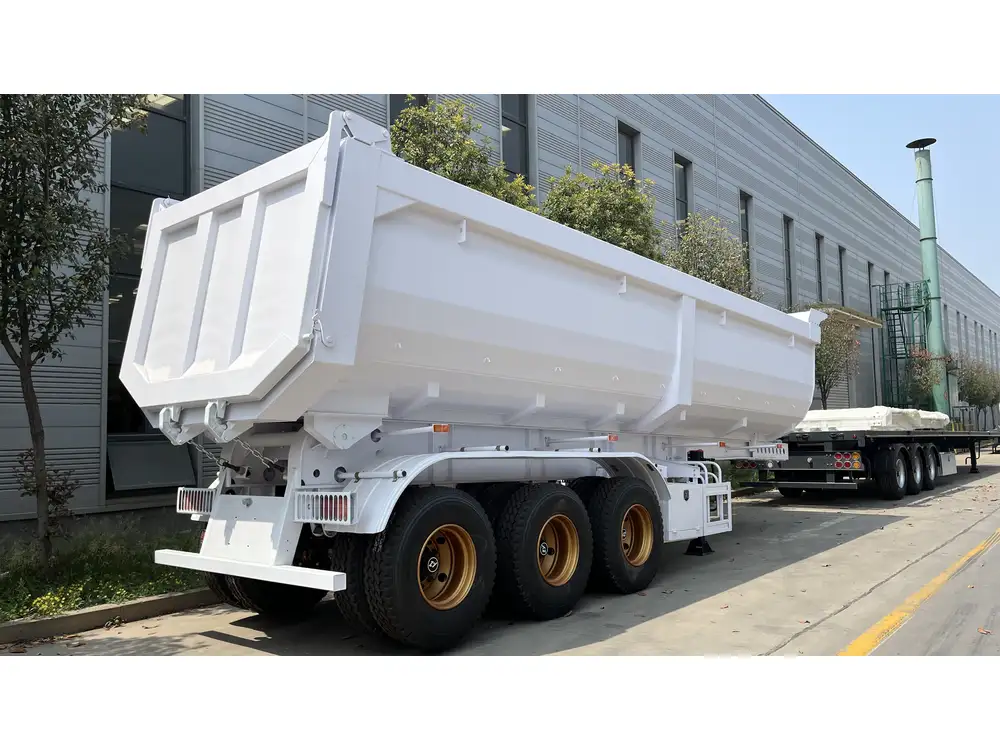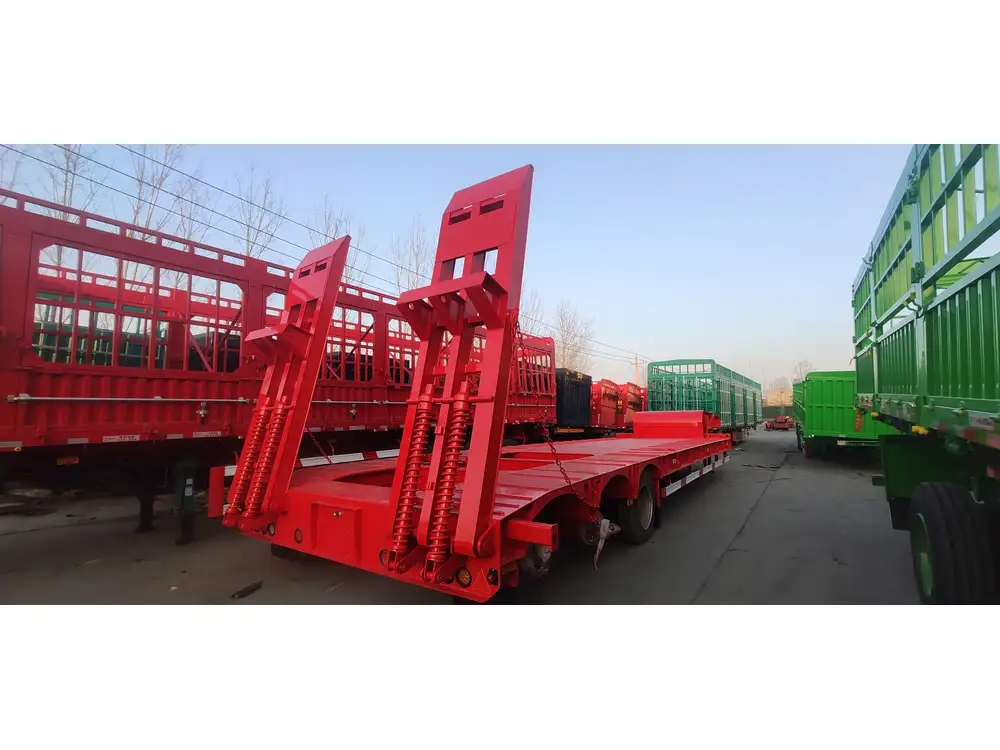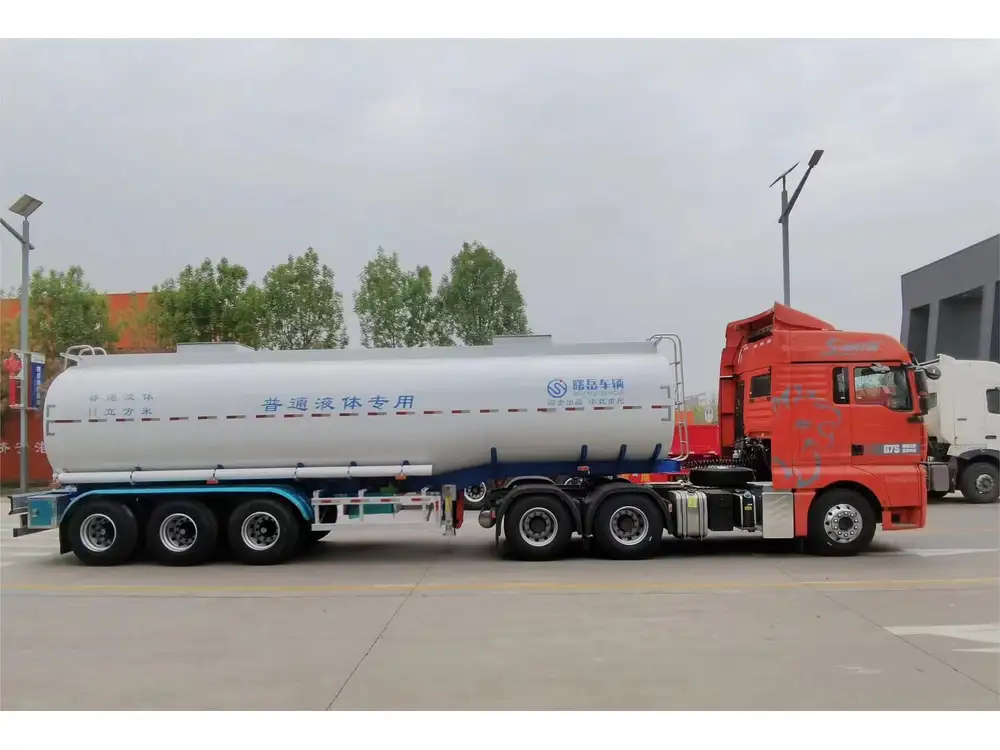Efficient truck trailer loading is pivotal for the smooth operation of any transportation business. At CarMax Vehicle, we understand that mastering this process not only enhances productivity but also ensures safety and compliance with industry standards. This guide delves deep into the nuances of truck trailer loading, providing you with actionable insights and best practices to optimize your loading operations.
Table of Contents
- Understanding Truck Trailer Loading
- Importance of Proper Loading
- Types of Truck Trailers
- Essential Equipment for Loading
- Step-by-Step Loading Process
- Weight Distribution and Load Balancing
- Securing the Load
- Common Mistakes to Avoid
- Best Practices for Efficient Loading
- Compliance and Safety Regulations
- Innovative Loading Technologies
- Conclusion
- Frequently Asked Questions
Understanding Truck Trailer Loading
Truck trailer loading encompasses the methods and techniques used to place cargo onto a trailer securely and efficiently. It involves strategic planning to ensure that the cargo is distributed evenly, secured properly, and complies with transportation regulations. Effective loading minimizes the risk of damage to goods, reduces transit time, and enhances overall operational efficiency.

Importance of Proper Loading
Proper loading is crucial for several reasons:
- Safety: Prevents accidents caused by shifting loads or unbalanced trailers.
- Efficiency: Streamlines the loading and unloading process, saving time and labor costs.
- Compliance: Ensures adherence to legal weight limits and transportation regulations.
- Protection of Goods: Reduces the likelihood of cargo damage during transit.
- Fuel Economy: Balanced loads can improve fuel efficiency by reducing drag and strain on the vehicle.
Types of Truck Trailers
Understanding the different types of truck trailers is essential for selecting the right one for your cargo. Below is a comparison of common trailer types:
| Trailer Type | Description | Best Used For |
|---|---|---|
| Dry Van Trailer | Enclosed trailer with solid walls and roof. | General freight and packaged goods |
| Refrigerated Trailer | Equipped with refrigeration units to maintain temperature. | Perishable goods like food and pharmaceuticals |
| Flatbed Trailer | Open trailer with no sides or roof. | Heavy machinery, construction materials |
| Lowboy Trailer | Flatbed trailer with a lower deck height for oversized loads. | Industrial equipment, large machinery |
| Step Deck Trailer | Similar to flatbed but with a lower first deck and higher second deck. | Loads requiring higher clearance |
Selecting the appropriate trailer type is the first step in ensuring efficient loading and transportation.
Essential Equipment for Loading
Equipping your loading dock with the right tools can significantly enhance the loading process. Essential equipment includes:
- Forklifts: Ideal for lifting and moving heavy pallets and goods.
- Pallet Jacks: Useful for maneuvering pallets within the loading area.
- Loading Ramps: Facilitate the smooth transfer of goods from trucks to storage areas.
- Straps and Tie-Downs: Essential for securing cargo to prevent movement during transit.
- Scale Systems: Accurately measure the weight of the load to ensure compliance with weight regulations.
Investing in quality loading equipment from CarMax Vehicle ensures durability and reliability in your operations.

Step-by-Step Loading Process
A systematic approach to loading a truck trailer enhances efficiency and safety. Follow these steps to optimize your loading process:
Preparation and Planning
- Assess the type and volume of cargo.
- Select the appropriate trailer type.
- Inspect the trailer for any damages or issues.
- Plan the load layout to ensure optimal weight distribution.
Loading the Trailer
- Begin by loading heavier items first, placing them on the floor of the trailer to maintain a low center of gravity.
- Distribute weight evenly from side to side to prevent imbalance.
- Stack lighter items on top of heavier ones, ensuring accessibility for unloading.
Securing the Load
- Use straps, ropes, or tie-downs to fix cargo in place.
- Ensure that all items are stable and cannot shift during transit.
- Utilize corner protectors and load bars for added security.
Final Inspection
- Check that the load is balanced and secured.
- Verify that the trailer doors close properly and that no items are protruding.
- Confirm compliance with weight limits and transportation regulations.
Weight Distribution and Load Balancing
Proper weight distribution is paramount in preventing trailer swaying and ensuring vehicle stability. Key considerations include:
- Front-to-Back Balance: Place heavier items towards the front of the trailer to balance the load.
- Side-to-Side Balance: Ensure equal weight distribution on both sides to maintain lateral stability.
- Axle Load: Distribute weight to avoid overloading any single axle, which can lead to increased wear and potential fines.
Implementing a balanced loading strategy enhances vehicle control and prolongs the lifespan of your trailer.
Securing the Load
Securing cargo effectively is essential to prevent movement that could cause damage or accidents. Techniques for securing loads include:
- Strapping: Utilize ratchet straps or cam buckle straps to hold items firmly.
- Blocking and Bracing: Use wooden blocks or metal braces to fill gaps and prevent shifting.
- Netting and Tarps: Covering loads with nets or tarps provides an additional layer of security.
- Confinement: Ensure that cargo fits snugly within the trailer to minimize movement.
At CarMax Vehicle, we supply a range of high-quality tie-downs and securing tools to meet your loading needs.

Common Mistakes to Avoid
Avoiding common loading mistakes can save time, money, and enhance safety. Common errors include:
- Overloading: Exceeding weight limits can lead to legal penalties and increased wear on vehicle components.
- Uneven Weight Distribution: Imbalanced loads can cause trailer swaying and reduce vehicle handling.
- Inadequate Securing: Failing to secure cargo properly can result in shifting loads and potential accidents.
- Ignoring Trailer Condition: Loading onto a damaged trailer can compromise load security and safety.
By being aware of these pitfalls, you can implement strategies to prevent them in your loading operations.
Best Practices for Efficient Loading
Implementing best practices ensures that your loading process is smooth and effective. Consider the following strategies:
- Standardize Procedures: Develop and enforce standard operating procedures for loading activities.
- Train Staff: Ensure that all personnel involved in loading are adequately trained in proper techniques and safety protocols.
- Utilize Technology: Incorporate load planning software to optimize load distribution and maximize trailer capacity.
- Regular Maintenance: Keep loading equipment and trailers in good condition to prevent delays and accidents.
- Monitor Compliance: Stay updated with transportation regulations to ensure ongoing compliance.
Adhering to these best practices can significantly enhance the efficiency and safety of your loading operations.
Compliance and Safety Regulations
Compliance with industry regulations is essential to avoid legal repercussions and ensure road safety. Key regulations to consider include:
- Maximum Weight Limits: Adhere to state and federal weight restrictions for trailers and loads.
- Load Securing Standards: Follow guidelines for securing cargo to prevent movement during transit.
- Oversize Load Permits: Obtain necessary permits for transporting oversized or overweight loads.
- Driver Hours of Service: Comply with regulations governing driver work hours to prevent fatigue-related accidents.
CarMax Vehicle stays abreast of the latest regulations to help you maintain compliance in your loading operations.

Innovative Loading Technologies
Advancements in technology are revolutionizing truck trailer loading. Some noteworthy innovations include:
- Automated Loading Systems: Mechanized systems that streamline the loading process, reducing manual labor and increasing precision.
- Load Optimization Software: Digital tools that calculate the best load configuration for weight distribution and space utilization.
- Telematics: Devices that monitor load conditions in real-time, providing data on weight, balance, and movement.
- Smart Tie-Downs: Advanced securing solutions that offer enhanced stability and ease of use.
Incorporating these technologies can lead to significant improvements in loading efficiency and safety.
Conclusion
Mastering truck trailer loading is a multifaceted endeavor that requires careful planning, the right equipment, and adherence to best practices and regulations. At CarMax Vehicle, we are committed to providing the expertise and tools necessary to optimize your loading operations. By implementing the strategies outlined in this guide, you can enhance the efficiency, safety, and profitability of your transportation business.
Frequently Asked Questions

1. What are the key factors to consider when choosing a truck trailer type?
When selecting a truck trailer, consider the nature of your cargo, weight requirements, environmental conditions, and any specific regulatory compliance. For instance, perishable goods may require refrigerated trailers, while oversized equipment might necessitate flatbed or lowboy trailers.
2. How can I ensure even weight distribution in my truck trailer?
To achieve even weight distribution, place heavier items towards the front of the trailer and ensure that weight is balanced from side to side. Utilize load planning software and regularly check load placement to maintain stability during transit.
3. What are the most effective methods for securing cargo in a trailer?
Effective cargo securing methods include using high-quality straps or ropes, employing blocking and bracing techniques, covering loads with netting or tarps, and ensuring that cargo fits snugly within the trailer to minimize movement.

4. Why is proper trailer maintenance important for loading operations?
Proper trailer maintenance ensures that all loading equipment functions correctly, prevents accidents caused by equipment failure, and prolongs the lifespan of the trailer. Regular inspections and timely repairs are essential for safe and efficient loading.
5. What technologies can enhance the truck trailer loading process?
Technologies such as automated loading systems, load optimization software, telematics, and smart tie-downs can significantly enhance the loading process by increasing efficiency, improving accuracy in weight distribution, and providing real-time monitoring of load conditions.



